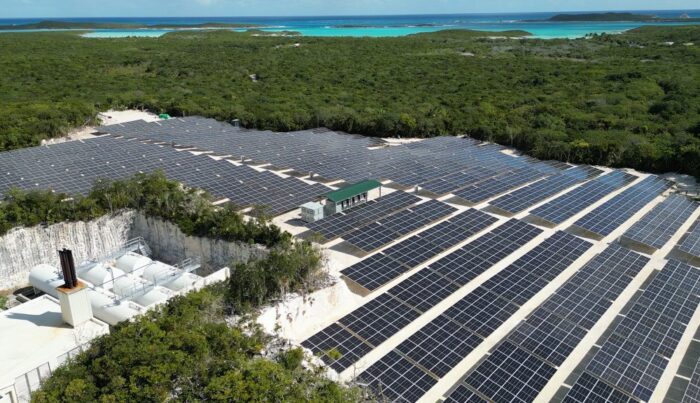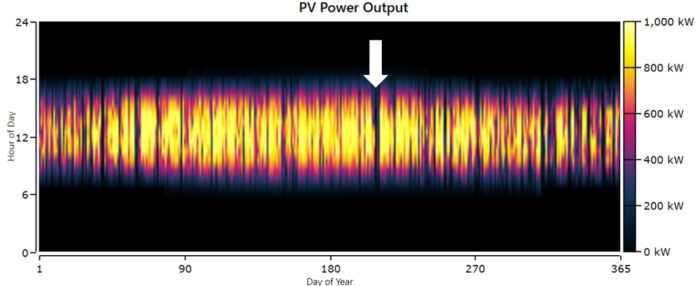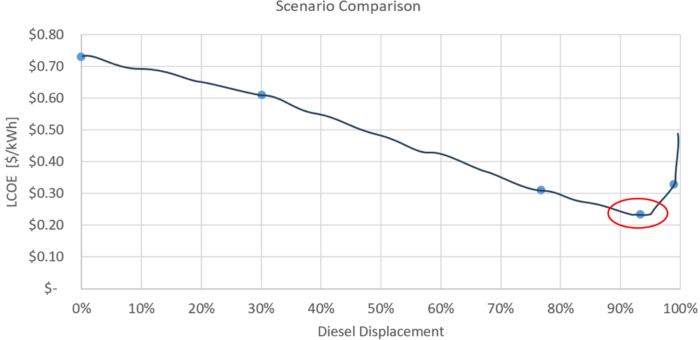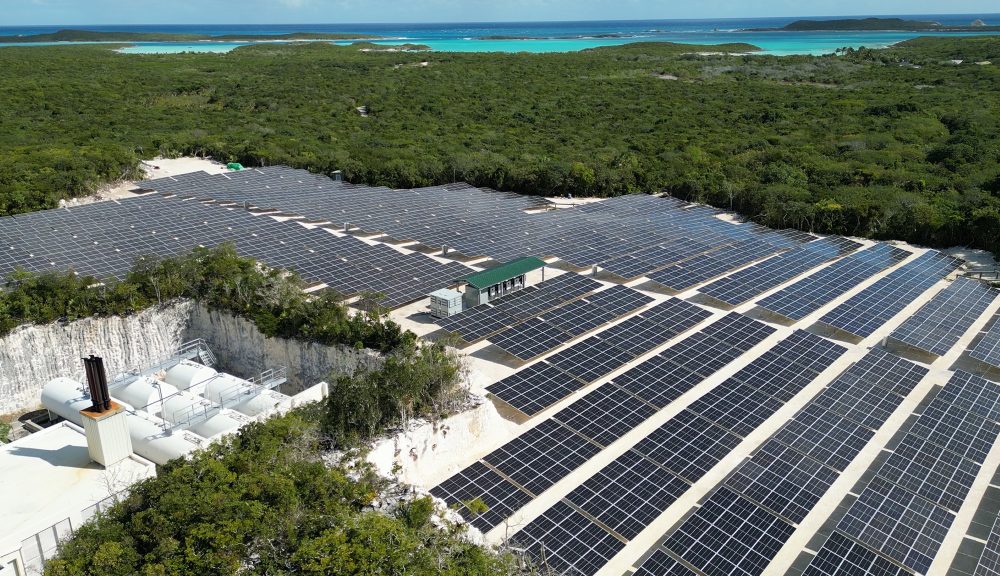May 12, 2025

By Marc Lopata, PE | Solar Island Energy
Much of my time at work includes helping people to understand how to improve their energy and financial performance with the help of microgrids. That is usually solar energy and batteries and energy efficiency. But sometimes we also integrate wind turbines, storage of ice energy, fly wheels, fuel cells and other bleeding edges. The overwhelming number of those projects are small island communities that burn diesel fuel to make electricity, and we move most of that diesel fuel with solar energy.
Together with other practitioners we make Microgrids mainstream. We are still in the early adopters phases and accurate knowledge is the key to switching to regular acceptance.
- Is your customer a business owner who uses high-accurate production with robotics and 3D printers? One of their primary worries is probably the energy quality of the utility grid.
- Or maybe your customer’s company is cold storage and they are in the same way about losing the grid and their inventory due to a malfunction. The same care can resonate with hospitals, military bases, data centers and other electricity users who need reliable electricity and cannot tolerate the lights that go out.
- Or maybe your customer lives or works somewhere without a grid.
These are all reasons to consider using a Microgrid to offer reliable electricity. But is a Microgrid worth it? That depends on the financial or non-financial benefits that are logical for your customer, whether it is a return on investment or holds lights at night, so that people can read and cook without burning burns in their houses.
Just like any technological progress, there are misconceptions about Microgrids. Some of them will explain this article, especially if they relate to small island communities. But they would still apply to the other use of Microgrid -use.
What is a Microgrid?
Ask five experts and you may get five answers. I like to keep things simple, so what about this:
- A group of electricity users relatively close together.
- The ability to generate and save energy to use it when needed.
- The generation and storage activa can be centralized or distributed around the different users (nodes) of the Microgrid, and they are centrally checked to manage the overall performance.
- There may also be the desire to connect with or to disconnect from a public utility grid based on financial, reliability or other drivers.
Can you still call your one building a Microgrid? Naturally. There is no Microgrid police. Fundamentally we refer to the technology that makes the above list possible, not whether an application uses all of them.
Myth 0: Microgrid technology is the key
Let’s remove this first. Two important steps will make the difference in the question of whether a Microgrid is successful.
First is an accurate basic profile. How much energy does the Microgrid site use every year, every day, every hour? Ultimately, this data is required per hour, a “8760 data set”. Whether you get that from a data logbook system or synthesize the (gambling) of single, long -term statistics influence the success of the project. For example, we sometimes get a customer who tells us: “We spent $ 500,000 on diesel fuel last year.” Can we make a loading profile from that? Yes. Will it be accurate? Maybe. Gigo (waste in / waste from) applies here.
Secondly, the energy efficiency of the Microgrid is. This is like a diet, and nobody likes to do it for the same reasons. Lighting and operations are usually simple goals. Other efforts for energy efficiency become more complex and more expensive and are usually not so good financial statistics – but it is still important to consider them all because it is much more expensive to make a kWh with a microgrid than to reduce consumption. Energy efficiency probably requires another article for itself.
Myth 1: A Microgrid on solar energy can only make 100% of your electricity from solar energy
This statement mainly applies in two cases with limited use.
- Users say it’s ok that when the batteries are exhausted, the lights go out.
- The project has a huge budget, no expectation of financial performance and no restrictions on the land area.
The military or rich landowners will tell you that Use Case No. 2 is the way they work. But it is my experience that most people are not happy when the lights go out, and/or they don’t have an abundant country or money, and they are actually worried about financial performance.
If an industry will grow, is financial sustainability not as important as other benefits? Yes, the early adopters, bless their hearts, are more focused on proof of concept and have abundant budgets. But to get to mainstream, we have to deliver performance that encourages a typical customer to invest.
Here is a thought exercise to help understand this myth. Consider making all your electricity with PV on a sunny day. If it was sunny every day where you live, and you needed the same amount of electricity every day, it would be easy to design the 100% compensation of Microgrid.
But that is not the case. Do you live in the Caribbean? Phoenix? Colorado? There are sometimes clouds everywhere. It even rains in South California.
For those cloudy days once in a while you would have to double the size of the PV and ESS to remain 100% renewable. If it is cloudy two days in a row, the PV and Ess should be the original size three times. And so forth.
At some point, the economy and business case for land use are not working so well. If it is cloudy one day a month, is it worthwhile to double the size and costs for 12 cloudy days a year? What about if it is cloudy one day a week? Or what about whether there is also a peak in energy consumption on a cloudy day? The site can be at the point where the solar energy simply cannot meet the demand and go out the lights.
Consult the graph below. Here the energy and power is produced by a typical solar energy system in the course of a year. The calendar day is the X-axis at the bottom from January to December. The time of day is vertical on the Y-axis that goes from morning to night. The brighter the color, the more power and energy the solar energy produces.


The variability is usually due to clouds, but also the temperature. It is clear that the sun does not shine at night, and therefore the night hours are black. But the solar power is also not consistent during sun hours. The white arrow points until the end of July and it seems that there is no production for a few days. This would be the same if the site used wind turbines. Sometimes the wind is not blowing.
Livalized Cost of Energy (LCOE) is an important Microgrid -Metriek. It is the costs of energy from the Microgrid, taking into account all costs and all energy produced. This includes the initial capital investment, plus all future costs. The future costs are maintenance (for everything), replacing equipment when the warranty runs, overhauling engines and of course fuel. Subsequently, all future costs are discounted to today’s dollars. (If you are not sure what that means, look for “the current value of a cash flow current.”)
As soon as the total net current costs are calculated, share it through the total energy produced during the life cycle of the project. This results in a costs per unit of energy, or $ per kWh.
Below is a graph of the LCO versus increasing percentages of fossil fuel or utility compensation. In this example, the lowest LCOE (LLCOE) is around $ 0.25/kWh and that happens around 93% diesel
displacement.


The left side of the curve is electricity produced in the same old way using your favorite fossil fuel or utilities. Moving to the right increases the relocation or offset of fossil fuels by solar energy. A hypothetical 100% diesel offset would be the extreme right -wing side of the curve where it moves on a sharp vertical. Nowadays, with the price of fuel and utilities, the Sweet Spot often appears to be around 90% of the relocation of fossil fuels. Aim at higher than that can double the land surface that is needed for the solar array and double the energy costs because of those strings of cloudy days. In Oversizing PV and ESS, in this degree also means a lot of “surplus energy” on sunny days that cannot be used and an investment in assets that do not achieve a return.
In Myth 2 we see a typical site that uses an average of 1,000 kWh per day. The LLCO -Microgrid for a typical fuel costs is 240 KWDC PV and 700 kWh from ESS. That compensates around 90% of the diesel fuel. If we strive for 100% diesel offset instead, that is 500 KWDC PV (2x the LLCOE investment) and 1,800 kWh of ESS (2.5x the LLCOE investment). The LL -Microgrid has surplus energy of around 9%, which means that 9% of the energy is wasted over the course of a year. The 100% solar microgrid has around 55% excess energy.
That is a difficult financial pill for swallowing.
The achievement of that 100% renewable point certainly increases the energy costs. It also requires more room for the PV array (or more wind turbines). Energy efficiency absolutely helps, but even after explaining an energy diet, it is more practical and more cost-effective to meet the demand on those much sought after and cloudy days with the help of the backup generators or the grid.
Keep reading in the Q2 2025 number of Solar Builder
Enter information below for direct access to the digital edition and opt-in for a free Solar Builder Magazine subscription.
Marc Lopata is president of Solar Island Energy. He is a recognized professional engineer and NABCEP-certified PV installation program and inspector. His portfolio as an engineer of Record, owner of the owner or on-site construction supervisor includes more than 700 solar projects, 20 Utility PV and battery projects and 80 microgrid and energy storage projects. He has been a technical adviser to the World Bank, who contributes to both “Solar Under Storm” manuals and a peer reviewer about the chances of survival of Hurricane for the National Renewable Energy Laboratory. Solar Island Energy works mainly with island communities that make electricity by burning diesel fuel; Helps them to implement microgrids for solar energy and improvements in the field of energy efficiency.
Tags: commercial and industrial, microgrids

